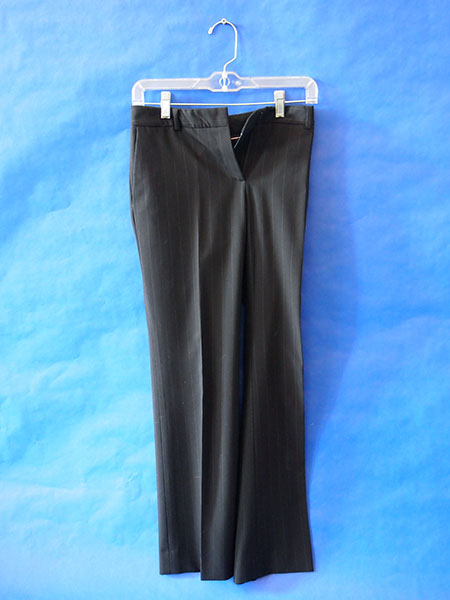![]() body | color | collections | commodity | cube | document | fabric | fetish | gender | glass | home | identity | living | machine | metal | minimal | mobility | narrative | olfactory | organic |
body | color | collections | commodity | cube | document | fabric | fetish | gender | glass | home | identity | living | machine | metal | minimal | mobility | narrative | olfactory | organic |
![]() pain | paper | plastic | plugs | power | protective | rectangular | ritual | round | sound | souvenir | spiritual | style | text-based | time | tool | touch | uniform | value | visual | warm | wood
pain | paper | plastic | plugs | power | protective | rectangular | ritual | round | sound | souvenir | spiritual | style | text-based | time | tool | touch | uniform | value | visual | warm | wood
| Clothing: Ann Taylor Black Dress Pants | |||
Narrative: Ann Taylor Spandex fibers are produced in four different ways: melt extrusion, reaction spinning, solution dry spinning, and solution wet spinning. All of these methods include the initial step of reacting monomers to produce a prepolymer. Once the prepolymer is formed, it is reacted further in various ways and drawn out to make the fibers. The solution dry spinning method is used to produce over 94.5% of the world's spandex fibers. The first step is to produce the prepolymer. This is done by mixing a macroglycol with a diisocyanate monomer. The two compounds are mixed in a reaction vessel to produce a prepolymer. A typical ratio of glycol to diisocyanate is 1:2. The prepolymer is further reacted with an equal amount of diamine. This reaction is known as chain extension reaction. The resulting solution is diluted with a solvent to produce the spinning solution. The solvent helps make the solution thinner and more easily handled, and then it can be pumped into the fiber production cell. The spinning solution is pumped into a cylindrical spinning cell where it is cured and converted into fibers. Made of wool from sheep, with a process that consists of: shearing; grading and sorting; grading and scouring; carding; spinning; weaving; and finishing. All of the byproducts are reused to make different grades of wool. Lanaset dyes are sold by several dye suppliers, including Paradise Fibers and PRO Chemical and Dye under their name of Sabraset. They are also sold under the brand name Telana. They are manufactured by Huntsman Textile Effects, which purchased the global Textile Effects business of Ciba Specialty Chemicals Inc. in 2006. They are acid dyes. Given to me as a gift from my father. Made of wool from sheep, with a process that consists of: shearing; grading and sorting; grading and scouring; carding; spinning; weaving; and finishing. All of the byproducts are reused to make different grades of wool. Lanaset dyes are sold by several dye suppliers, including Paradise Fibers and PRO Chemical and Dye under their name of Sabraset. They are also sold under the brand name Telana. They are manufactured by Huntsman Textile Effects, which purchased the global Textile Effects business of Ciba Specialty Chemicals Inc. in 2006. They are acid dyes. These pants were given to me by my sister who in turn received them from my mother's co-worker in Springfield, MA. My mother's co-worker purchased them at Ann Taylor near Springfield, MA. My sister handed-down a group of pants to me around 2010. They have traveled with me from Manhattan to Brooklyn. |
 |
||
![]()
